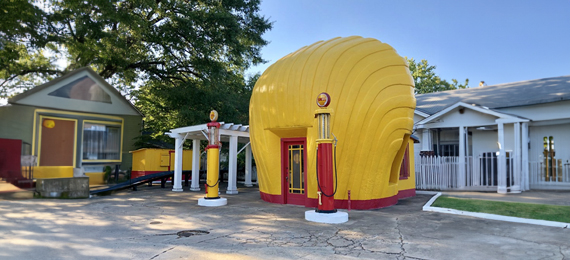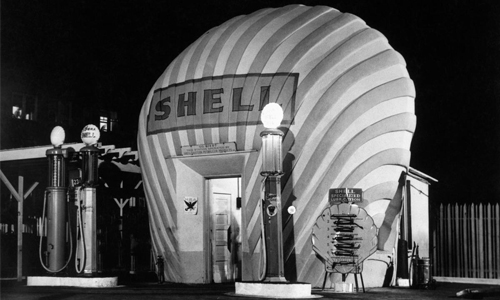
Are you a traveler or a resident in search of unique landmarks? Then, this blog post is for you!
Have you heard about the famous shell gas station shaped like a shell? If not, continue reading this post for more information.
This iconic structure has become somewhat of a tourist attraction, drawing visitors from far and wide who are attracted to its unique design. However, finding the exact location of this peculiar gas station can sometimes be a challenge. But, this blog will help you know more about the Shell gas station.
The Winston-Salem Shell Gas Station was constructed in which year?
- A. 1930
- B. 1940
- C. 1925
- D. 1935
Explore the blog to discover details about the world’s most iconic structure.
Shell Gas Station: A History of Architectural Excellence

The Winston-Salem 1930 Shell Gas Station is a former filling station constructed in 1930 by R.H. Burton and his son, Ralph. It played a significant role in this transformation and attracted most of the customers. They built eight in the area of Winston-Salem, but only one station remains in Prague and Peachtree Streets. Later, this building was listed on the National Register of Historic Places on May 13, 1976, and is an example of representational or novelty architecture.
Winston-Salem 1930 Shell Gas Station – A Hub of Innovation
The gas station is designed in the shape of a giant scallop shell. This structure showcases the intricate craftsmanship and attention to detail that defined the era. Every aspect of this gas station exudes a sense of elegance and creativity, from its sleek lines to its elegant signage. Hence, the station stands as a testament to the imagination and creativity of its architects.
Winston-Salem 1930 Shell Gas Station – A Social Meeting Point
The gas station became an integral part of the community. Beyond its functional purpose, the 1930 Shell Gas Station also served as a gathering place and social meeting point for the car enthusiasts and residents of Winston-Salem. They would often gather here to exchange news, catch up on the latest gossip, and discuss the latest developments in the automotive world.
The Last Shell-Shaped Shell Station – Get To Know the Preservation History
As Winston-Salem continues to evolve and modernize, it’s important to preserve the historical landmarks that helped shape the identity of the city. An organization dedicated to the preservation of historic sites spent nearly one year and $50,000 to bring the landmark station back to its original condition. To reveal the original yellow-orange color of the shell, workers removed the layers of faded yellow paint. The original front door was repaired, and a crack has been fixed that was previously sealed with black tar. The quality oil company donated replica lamp posts and also restored gas pumps, which helped finish off the restoration. The landmark now serves as a museum in North Carolina, and we ensure that future generations can learn from the history of Winston-Salem.
You must read this blog on sustainable architectural projects to learn more about implementing environmentally friendly buildings.
Why is the Shell Gas Station Called Shell?
The Shell gas station briefly took a back seat in 1907 when the company was merged with the Royal Dutch Shell Group, but the newly formed business became known as Shell.
What is the Yellow Shell in Winston-Salem?
In the earliest days, red and yellow have been consistent elements of the shell’s brand image. Both yellow and red are used in maritime signaling and may come from the company’s origin in exports.
Who is the Parent Company of Shell?
Shell Oil Company is a well-known U.S. oil company that is the principal subsidiary of Royal Dutch Shell PLC, headquartered in the Hague, Netherlands.
How Many Shell Gas Stations Are There in the World?
Shell is the world’s largest single-brand retail business and serves over 300 million customers through more than 45,000 sites in over 70 countries globally.